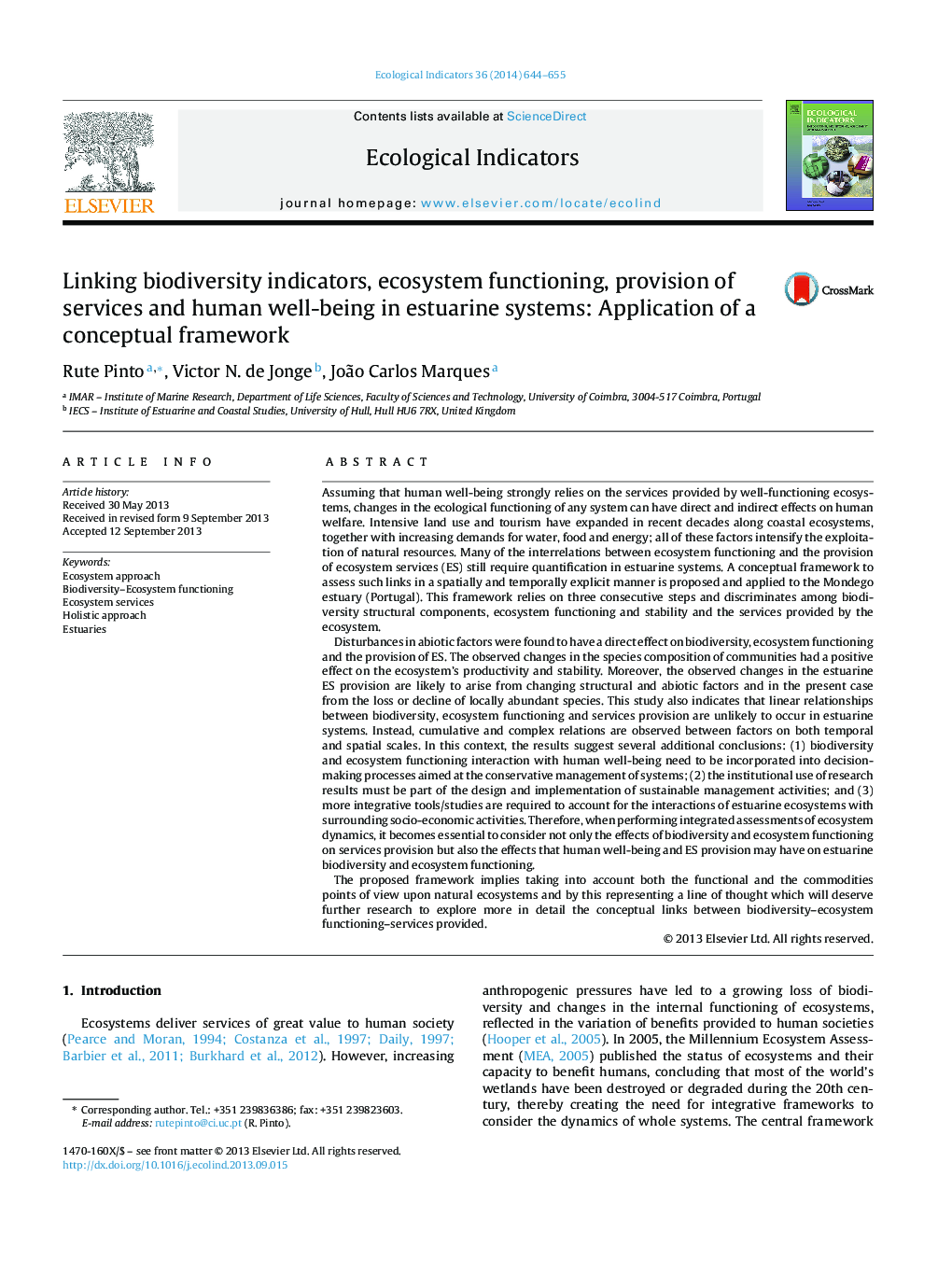| کد مقاله | کد نشریه | سال انتشار | مقاله انگلیسی | نسخه تمام متن |
|---|---|---|---|---|
| 4373360 | 1617164 | 2014 | 12 صفحه PDF | دانلود رایگان |
• A conceptual framework linking estuarine biodiversity assets, functioning, stability and ecosystem services was applied.
• Biodiversity assets and ecosystem functioning influence services flows important for human well-being.
• The linkages between biodiversity, functioning and services provision for human well-being are neither straightforward nor universal.
• The need for integrative sets of indicators able to bridge socio-ecological or integral systems was emphasised.
• This framework implies considering both functional and commodities aspects representing a line of thought which will deserve further research.
Assuming that human well-being strongly relies on the services provided by well-functioning ecosystems, changes in the ecological functioning of any system can have direct and indirect effects on human welfare. Intensive land use and tourism have expanded in recent decades along coastal ecosystems, together with increasing demands for water, food and energy; all of these factors intensify the exploitation of natural resources. Many of the interrelations between ecosystem functioning and the provision of ecosystem services (ES) still require quantification in estuarine systems. A conceptual framework to assess such links in a spatially and temporally explicit manner is proposed and applied to the Mondego estuary (Portugal). This framework relies on three consecutive steps and discriminates among biodiversity structural components, ecosystem functioning and stability and the services provided by the ecosystem.Disturbances in abiotic factors were found to have a direct effect on biodiversity, ecosystem functioning and the provision of ES. The observed changes in the species composition of communities had a positive effect on the ecosystem's productivity and stability. Moreover, the observed changes in the estuarine ES provision are likely to arise from changing structural and abiotic factors and in the present case from the loss or decline of locally abundant species. This study also indicates that linear relationships between biodiversity, ecosystem functioning and services provision are unlikely to occur in estuarine systems. Instead, cumulative and complex relations are observed between factors on both temporal and spatial scales. In this context, the results suggest several additional conclusions: (1) biodiversity and ecosystem functioning interaction with human well-being need to be incorporated into decision-making processes aimed at the conservative management of systems; (2) the institutional use of research results must be part of the design and implementation of sustainable management activities; and (3) more integrative tools/studies are required to account for the interactions of estuarine ecosystems with surrounding socio-economic activities. Therefore, when performing integrated assessments of ecosystem dynamics, it becomes essential to consider not only the effects of biodiversity and ecosystem functioning on services provision but also the effects that human well-being and ES provision may have on estuarine biodiversity and ecosystem functioning.The proposed framework implies taking into account both the functional and the commodities points of view upon natural ecosystems and by this representing a line of thought which will deserve further research to explore more in detail the conceptual links between biodiversity–ecosystem functioning–services provided.
Journal: Ecological Indicators - Volume 36, January 2014, Pages 644–655
